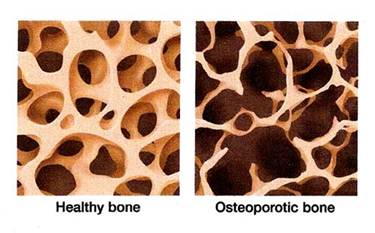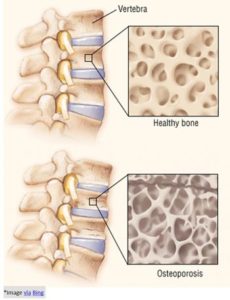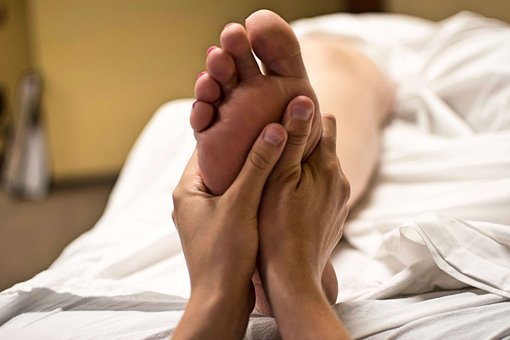What is Osteopenia?
The strength in our bones comes from the presence of minerals like phosphate and calcium. The weaker the bones, the easier they are to break. Osteopenia involves below normal levels of bone density leading to a greater risk of bone fracture.

Osteopenia and osteoporosis:
Bone loss in osteopenia is not as serious as in osteoporosis. In below levels of bone density, you are more prone to a bone fracture than someone with a normal bone density but is at a lesser risk to fracture a bone than someone with osteoporosis.

Importance of Osteopenia:
Bone fractures due to osteopenia and osteoporosis are painful though some vertebral fractures are not. Hip fractures in elders necessitate surgery and need serious post-operation care, causing death in many cases.
The signs of Osteopenia may include:
- Hunching or stooped posture
- Frequent backaches
- Loss of bone in the jaw
- Weakness from a previous injury or fracture
Risk factors and causes:
You may be at risk for Osteopenia if:
- You are a female and have early menopause
- You smoke and are a heavy alcohol drinker.

- Your diet is less in calcium content.
- Your body is thin
- You have a family history of anorexia nervosa (eating disorder due to fear of food)
- Your lifestyle is inactive
- Have a family history
Symptoms and signs:
Normally osteopenia has no symptoms. It may not be discovered until someone has a bone density test. When symptoms do appear it may be characterized by localized bone pain and weakness in an area of the fracture.
Treatment:
The treatment for Osteopenia may involve the use of medication or introducing changes in lifestyle.
Medication:
May include Bisphosphonates like Fosamax, Actonel, etc. Certain hormones such as estrogen are also used. Gender-specific medication is prescribed for treating osteopenia.
Lifestyle Changes may include:
1. Introduction of foods rich in calcium.
2. Bone-strengthening exercises.
3. Refraining from smoking and alcohol consumption.
Natural Treatment
Without using the medication the following activities could be undertaken, to improve bone density and strength:
Regular weight-bearing exercises: if you don’t use bones and muscles you lose them.
Regular walks: It is a low-intensity activity having a positive effect on bone health.
Regular intake of bone-building nutrients: like vitamin D and calcium. Have a proper mix of other key nutrients.
Have adequate intake of vitamin K: it is so vital for bones and cardiovascular health.
Update your knowledge of key bone-building nutrients: you have at least 20 key bone-building nutrients for good bone health. Know them all and ensure a balanced intake of them.
Have an alkaline diet: alkaline balance is very important for bone health. An alkaline food helps in controlling the acids which keep eating the bones.
De-stress: Stress is a crucial factor and is directly related to the risk of fracture and bone loss. Pursue activities to de-stress which kelp lower the stress levels and ensure better bone health.
What is the Prognosis of osteopenia?
The overall prognosis of osteopenia is very good. Bone loss can be slowed with home remedy solutions and lifestyle changes. With medication, bone density can be stabilized so that fracture risk is minimized.
References:
https://www.medicinenet.com/osteopenia/article.htm#osteopenia_facts




